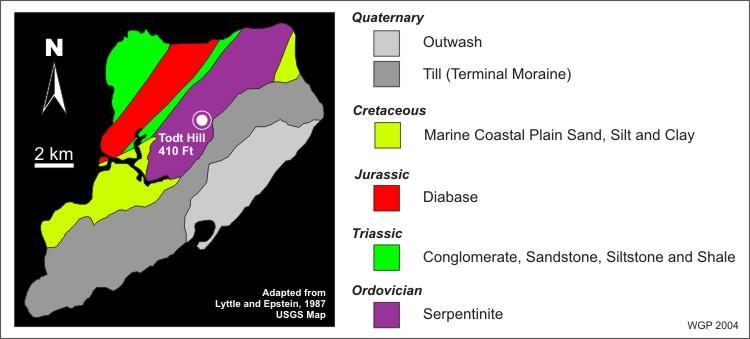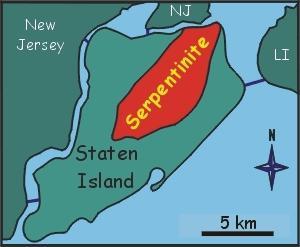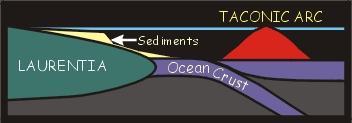 |
Geology of Staten Island
 |
 |
|
|
The Staten Island Serpentinite |
|
 |
A lens
shaped body of serpentinite underlies a 55 km2 area of north
central Staten Island. It is well exposed along a prominent ridge that
reaches an elevation of 135 meters above sea level on Todt Hill. This
is the highest elevation of any natural feature in NYC, and in fact
is the highest point on the US eastern seaboard south of Maine.
Smaller serpentinite bodies underlie CUNY's John Jay College of Criminal Justice in midtown Manhattan, and the Stevens Institute of Technology on the New Jersey shore of the Hudson River in Hoboken. |
|
|
The pale-green serpentinite is the product of low-grade metamorphism of peridotite, during which the primary pyroxenes were replaced by a mineral assemblage composed predominantly of serpentine-group minerals. An average sample of the Staten Island serpentinite contains 66% lizardite and 27% chrysotile (asbestos). In 1858, the H.W. Johns Manufacturing Company began mining low-quality chrysotile asbestos from the serpentinite body on Staten Island for the local manufacture of fire-resistant shingles. The H.W. Johns Manufacturing Company merged with the Manville Covering Company. The new company, Johns-Manville became a world leader in asbestos mining and asbestos-related manufacturing. |
|
|
|
 |
|
| In the Cambrian and Early Ordovician, oceanic lithosphere off of the south coast of Laurentia was being subducted below an island arc known as the Taconic Arc. The oceanic mantle of the subducting slab was composed of peridotite | Approximately 470 million years ago, the Taconic Arc collided with Laurentia and in the process, pushed a slice of intervening ocean floor onto the continent. This ultramafic sliver marks the suture line between Laurentia and the Taconic Arc that accreted to it in the Ordovician. |
| The fragmented sliver of peridotite was subsequently metamorphosed to form the string of serpentinite pods that occur across the New York City area, including the Staten Island serpentinite. | |
© 2003 Wayne G. Powell